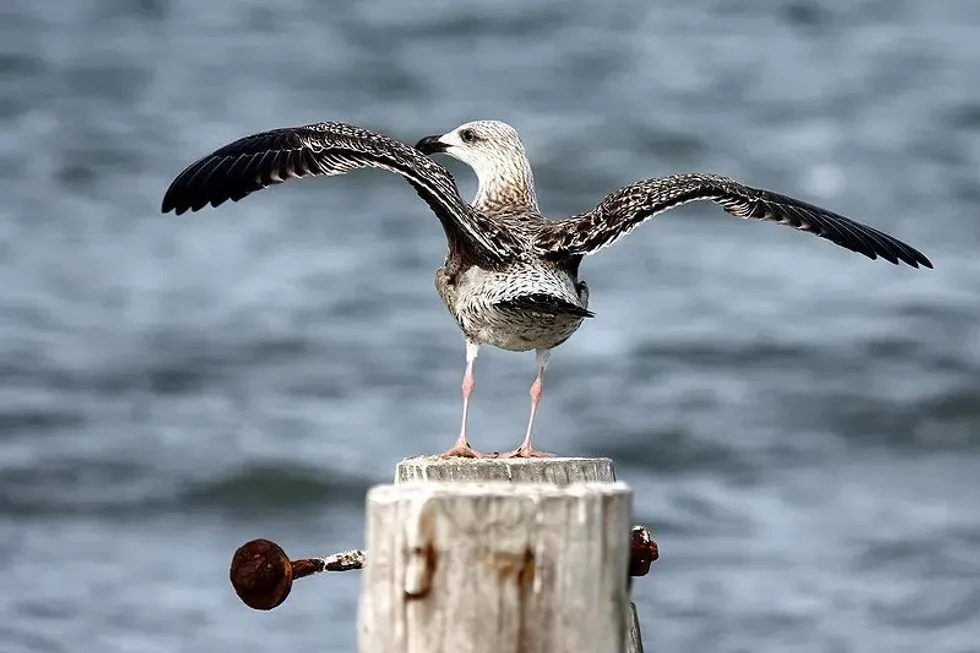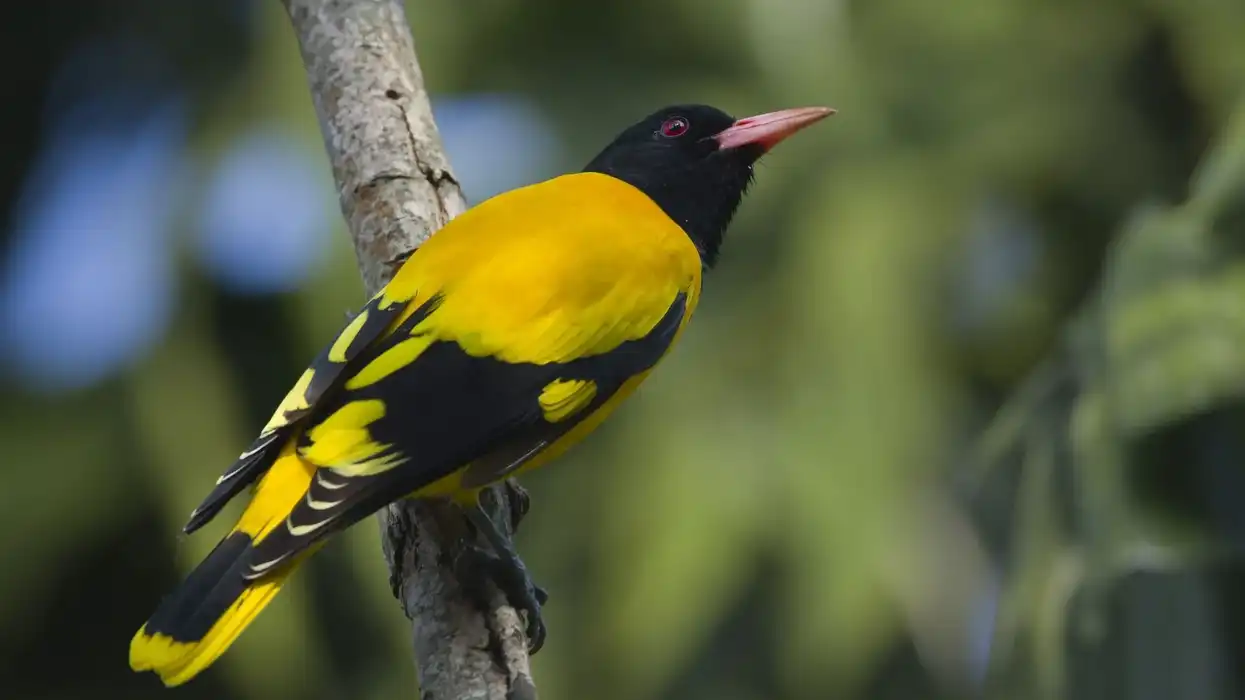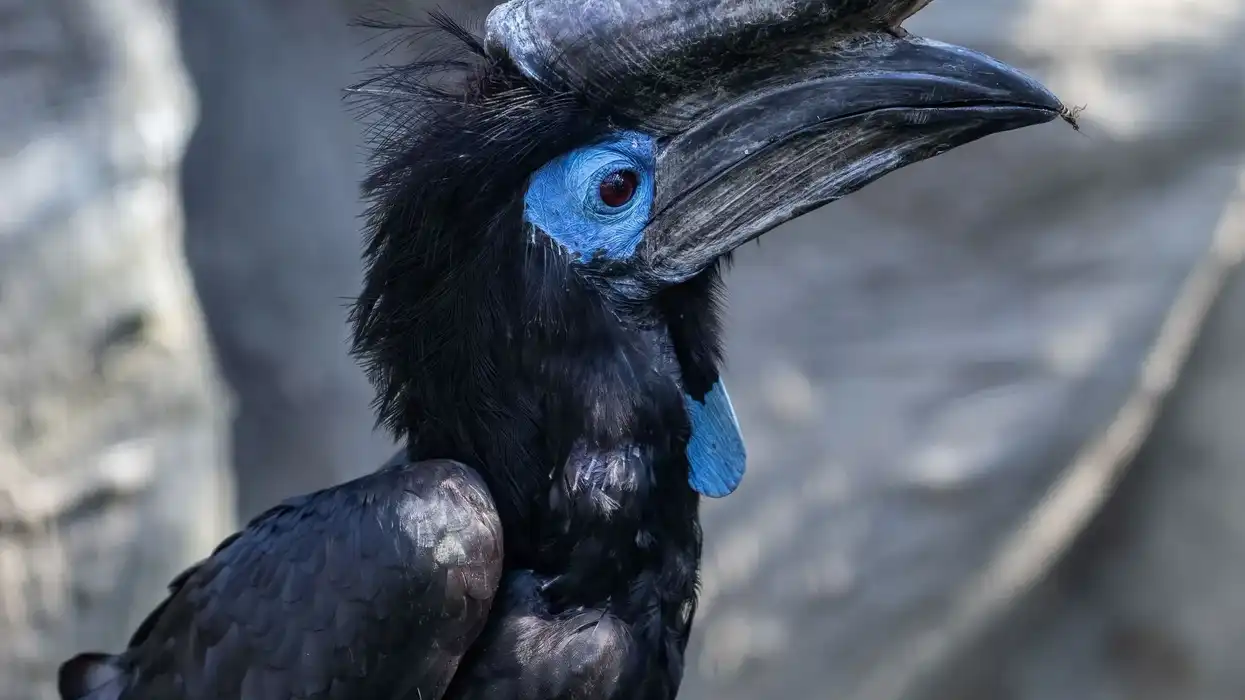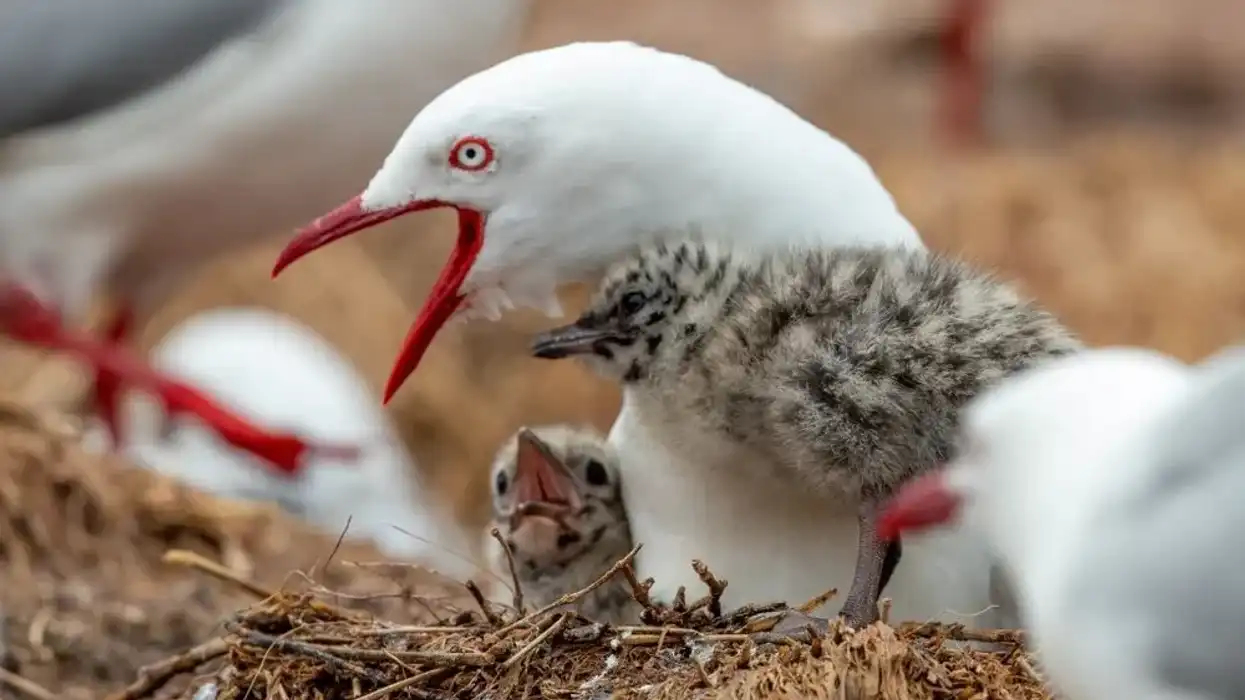The gull is a sea bird, one of more than 40 species of robustly built web-footed seabirds in the laridae family of gulls and terns (order Charadriiformes). The great black-backed gull (Larus marinus) is the largest gull in the world with its populations found across the Atlantic coast of North America.
Significant populations of these birds can also be found on large lakes, particularly the Great Lakes. The great black-backed gull (larus marinus) has broad black wings, a big yellow bill, and a gleaming white head with pink legs.
Here are some interesting facts about the great black-backed gull. Check out our other articles on the laughing gull and the dalmatian pelican.
Great Black-Backed Gull Interesting Facts
What type of animal is a great black-backed gull?
Gulls are sea birds from the order Charadriiformes that have colorful wings and bodies. Immature great black-backed gulls transform into sexually mature adults after four years.
What class of animal does a great black-backed gull belong to?
Great black-backed gulls belong to the Aves class of birds. This North American bird is the largest gull species in the world.
How many great black-backed gulls are there in the world?
The number of great black-backed gulls on the East Coast is large, although it has been dropping since 1966. Between 1966 and 2015, Maine's population decreased by more than 8.5 percent a year, culminating in a 99 percent population loss.
This species has a Continental Concern Score of 12 out of 20 and is not on the 2016 State of North America's Birds Watch List.
Where does a great black-backed gull live?
Great black-backed gulls are found along the Atlantic Coast in North America and near the Great Lakes as well.
What is a great black-backed gull's habitat?
The Atlantic Coast and the Great Lakes are home to great black-backed gulls. They nest in isolated, predator-free areas such as piers or islands, then disperse away from the colony for the remainder of the year to feed at sea, along beaches, and in landfills.
Who do great black-backed gulls live with?
Great black-backed gulls live in groups and they also attack their prey in groups.
How long does a great black-backed gull live?
A normal great black-backed gull can live up to 15 years, with breeding occurring at the age of four years. When a bird was discovered in New Jersey in 1994 and recognized by its band, the oldest great black-backed gull on record was at least 26 years and 9 months old.
How do they reproduce?
The great black-backed gull nests on hills, outcrops, and pinnacles, as well as on rooftops in certain areas during the breeding season. When the pair has been formed, sexual mating takes place.
The female deposits one to three olive-greenish or brownish eggs. Incubation lasts around 27 days and is shared by both parents. The chicks are covered in pale gray down with prominent black spots.
What is their conservation status?
The populations of great black-backed gulls are not threatened at all and are widespread across their range. The conservation status of great black-backed gulls is listed as that of Least Concern by the IUCN.
Great Black-Backed Gull Fun Facts
What do great black-backed gulls look like?
Adult great black-backed gulls have white underwings and backs with slaty-black upper wings and backs. Their legs are dull pink, their beak is yellow with a crimson patch towards the tip, and their eyes are darkish.
Juveniles are gray-brown and white on top, with white bases and black tips on their tails, black beak, and blackish flying feathers. In the Pacific Ocean or the tropics, a few seemingly similar dark-backed, quite big gulls can be seen.
How cute are they?
Great black-backed gulls are extremely adorable to look at while they are flying near the sea.
How do they communicate?
The great black-backed gull species have a unique set of sounds that they use to transmit things like mating rituals, warning cries, and the location of food sources. Young great black-backed gulls have high-pitched whimpering noises and when combined with their behavior, prompt parents to vomit food for them.
How big is a great black-backed gull?
The great black-backed gull is two times bigger than the little gull. The great black-backed gull size range is 26-32 in (66.0-81.2 cm). The wingspan is around 4.9-5.6 ft (1.5-1.7 m) in length.
How fast can a great black-backed gull fly?
A great black-backed gull with a most effective loiter airspeed of 22 mph (35.4 kph) may fly at speeds of up to 28 mph (45 kph) without raising its metabolic rate by more than 15 percent.
How much does a great black-backed gull weigh?
A great black-backed gull male weight is around 3.96 lb (1.80 kg) while that of a female is 3.30 lb (1.50 kg).
What are the male and female names of the species?
They are known as male great black-backed gulls and female great black-backed gulls.
What would you call a baby great black-backed gull?
A baby great black-backed gull is known as a juvenile.
What do they eat?
Mussels, crabs, sea urchins, various marine invertebrates, fish, and birds are all prey for great black-backed gulls. They feed on the eggs, chicks, and adults of other birds, such as Atlantic puffins and other puffins.
Their known predators include white-tailed eagles, sharks, and killer whales.
Are they dangerous?
There's no denying that Europe's and neighboring areas' enormous gulls, particularly the herring gull and smaller and great black-backed gulls, are intimidating and possibly hazardous. Yes, a great black-backed gull will steal food from your hand, especially if it is held high and out of sight of humans.
Would they make a good pet?
No, they are not meant to be kept as a pet as they are migratory birds, and an enclosed habitat doesn’t fit for their survival.
Did you know...
During the winter, humpback whales force a significant number of immature great black-backed gulls to the surface to feed on fish.
Many bird species' feathers were utilized for stylish apparel in the 1800s, including the great black-backed gull.
Several genera are commonly recognized for particular specialist gulls, though many authorities include these together under the umbrella genus Larus. For instance, the great black-backed gull (l. ridibundus) is a dark-headed bird with red legs that breeds in Eurasia and Iceland and spends the winter in India and the Philippines.
Are great black-backed gulls protected?
Yes, great black-backed gulls are now listed as a conservation priority in the following:
Amber listed in Birds of Conservation Concern 4 (2015 update)
Green listed in Birds of Conservation Concern in Ireland 2020–2026
EC Birds Directive – migratory species
How to identify the great black-backed gull?
The greater black-backed gull has a black back and pinkish legs, whereas the lesser black-backed gull has yellow legs, a black to dark gray back, and black primaries with only a few tiny white spots. The lesser black-backed gull is a large and huge gull with a large beak and broad wings.
Juveniles have a pale head, a vividly patterned back, and a larger beak.
The male great black-backed gull has brighter, more colorful plumage, but the difference is so minor that only experienced bird observers can distinguish a gull's sex.
Here at Kidadl, we have carefully created lots of interesting family-friendly animal facts for everyone to discover! Learn more about some other birds from our limpkin facts and Atlantic puffin facts pages.
You can even occupy yourself at home by coloring in one of our Great Black-Backed Gull coloring pages.










